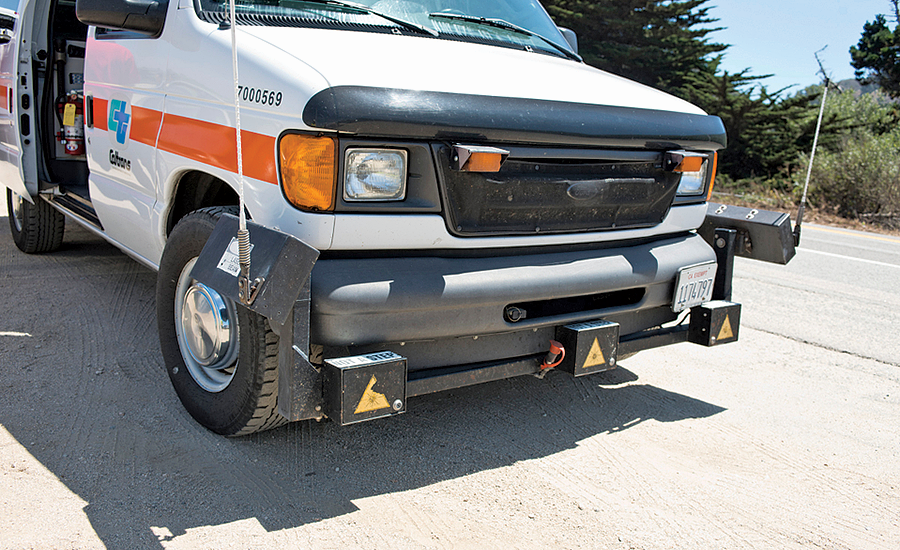State transportation departments are considering using high-tech maps to measure how much fuel is saved from driving on repaved highways, thanks to a new pavement-vehicle-interaction test developed at MIT.
“We are moving into a new era of pavement management systems, which consider not only rider comfort and safety but also the quantitative carbon environmental impact,” says Franz-Joseph Ulm, director of MIT’s Concrete Sustainability Hub (CSH), an industry-funded research center that focuses on ways to reduce the material’s 5% to 10% global carbon footprint.
The videotaped test uses a ½-in. rigid steel tire, which rolls along a polymer pavement on a lab bench at a constant speed. Researchers measure the horizontal force required to move the tire forward at different speeds and with different loads. Friction is eliminated by placing air blowers around the test pavement.
“Most of the world is looking [at gas, engines and batteries] from the tires up to understand how to produce less greenhouse gas,” says Tom Pyle, pavement management engineer with the California Dept. of Transportation (Caltrans). “But we’re looking from the tires down, to the pavement, to achieve efficiencies the public never sees by significantly reducing greenhouse gases.
“In studies, we’re starting to see 2% to 3% in greenhouse-gas reduction in locations with traffic volume up to 300,000 vehicles per day,” Pyle adds.
Caltrans provided a trove of data to MIT for the fuel-consumption modeling. Sources include GPS coordinates on every crack, rut and bump in California’s 50,000 lane- miles, Pyle says. Ground-penetrating radar identifies the road’s structure and the materials beneath the pavement, and the resulting pavement management system includes data on materials, road conditions, decision trees and modeling programs for selecting paving projects.
“For each road, we know the amount of traffic, the temperature [of the pavement], structural data, material data and GPS coordinates,” Ulm says. “Through this model, we can calculate excess fuel consumption.”
Tom Tietz, head of the California and Nevada Cement Association, says California is a leader in reducing CO2 emissions with its AB32 cap-and-trade program. The state’s efforts have spurred further research at the University of California’s Pavement Research Center, where researchers are analyzing fuel-consumption models.
Minnesota and Colorado also are considering implementing pavement management systems, and Michigan State and Oregon State universities are involved with fuel consumption modeling. “It’s pretty darn exciting if we can use our existing infrastructure as part of the solution [to reducing CO2],” Tietz says.
Since 2000, the annual per-capita cement consumption has more than doubled, says Ulm. “In 2014, the average annual per-capita cement consumption was 577 kilograms, enough to produce more than 2 cubic yards of concrete per year,” Ulm notes. Other than diesel exhaust, which has fine particles, particles are released when trucks drive over pavement and can have an impact on the ozone level. “If you stiffen the roads, you can reduce these particles,” Ulm says.
One percent of overall fuel consumption comes from pavement deflection. While a passenger car wouldn’t achieve significant gas savings, road stiffness could make an enormous difference for 40-ton trucks, with up to 4% gas mileage savings, Ulm says. “If we can save 2 million tons of CO2 per year, at the aggregate level, this becomes extremely important in a low-carbon economy,” he says.
“MIT has helped us [to] determine locations where projects could be built that would realize the greatest savings for vehicles where pavement is rough,” Pyle says.







Post a comment to this article
Report Abusive Comment